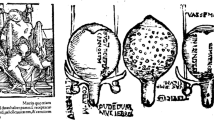Abstract
Purpose
Vulvodynia and vaginismus are common chronic vulvar pain disorders for which there is a paucity of literature on pregnancy outcomes of affected women. The study objective was to evaluate the associations between vulvodynia and vaginismus and obstetric outcomes.
Methods
We performed a retrospective cohort study including all birth-related admissions from 1999 to October 2015 extracted from the Healthcare Cost and Utilization Project-National Inpatient Sample from the United States. Women with vulvodynia or vaginismus were identified using the appropriate ICD-9 codes. Multivariate logistic regression models, adjusted for baseline maternal characteristics, were performed to evaluate the effect of vulvodynia and vaginismus on obstetrical and neonatal outcomes.
Results
A total of 879 obstetrical patients with vulvodynia or vaginismus were identified in our cohort of 13,792,544 patients admitted for delivery in US hospitals between 1999 and 2015, leading to an overall prevalence of 6 cases per 100,000 births. Between 1999 and 2015, the annual prevalence of vulvodynia or vaginismus rose from 2 to 16 cases per 100,000. Vulvodynia and vaginismus were associated with increased risks of eclampsia, chorioamnionitis, post-term pregnancy, cesarean delivery, instrumental vaginal delivery, blood transfusions, prolonged hospital stays, congenital anomalies and intrauterine growth restriction.
Conclusion
Vulvodynia and vaginismus in pregnancy appears underreported in pregnancy compared to reported population rates. Prevalence of reporting seems to have increased in the last decades and is associated with increased risks of maternal and newborn morbidities. Obstetrical caregivers should be aware of the underreporting of these conditions and the associated adverse effects when counseling obstetrical patients.

Similar content being viewed by others
References
Vahia VN (2013) Diagnostic and statistical manual of mental disorders 5: a quick glance. Indian J Psychiatry 55(3):220–223
Binik YM (2010) The DSM diagnostic criteria for vaginismus. Arch Sex Behav 39(2):278–291
Bergeron S et al (2020) Vulvodynia. Nat Rev Dis Primers 6(1):36
Möller L et al (2015) Reproduction and mode of delivery in women with vaginismus or localized provoked vestibulodynia: a Swedish register-based study. BJOG 122(3):329–334
Tourrilhes E et al (2019) Obstetric outcome of women with primary vaginismus. Pan Afr Med J 32:160
Nguyen RH, Stewart EG, Harlow BL (2012) A population-based study of pregnancy and delivery characteristics among women with vulvodynia. Pain Ther 1(1):2
Goldsmith T et al (2009) Vaginismus as an independent risk factor for cesarean delivery. J Matern Fetal Neonatal Med 22(10):863–866
Research, A. F. H. and Quality (2017) HCUP databases. Healthcare cost and utilization project (HCUP). Agency for healthcare research and quality, Rockville, MD.
Faye RB, Piraccini E (2021) Vulvodynia, in StatPearls. StatPearls Publishing LLC, Treasure Island (FL).
Kadir ZS et al (2018) The neurobiology and psychiatric perspective of vaginismus: linking the pharmacological and psycho-social interventions. Curr Drug Targets 19(8):916–926
Arnold LD et al (2007) Assessment of vulvodynia symptoms in a sample of US women: a prevalence survey with a nested case control study. Am J Obstet Gynecol 196(2):128.e1-128.e6
Nguyen RH, Reese RL, Harlow BL (2015) Differences in pain subtypes between Hispanic and non-Hispanic white women with chronic vulvar pain. J Womens Health (Larchmt) 24(2):144–150
Drenth JJ et al (1996) Connections between primary vaginismus and procreation: some observations from clinical practice. J Psychosom Obstet Gynaecol 17(4):195–201
Hales CM et al (2018) Trends in obesity and severe obesity prevalence in US youth and adults by sex and age, 2007–2008 to 2015–2016. JAMA 319(16):1723–1725
Neovius M, Janson A, Rössner S (2006) Prevalence of obesity in Sweden. Obes Rev 7(1):1–3
Gota CE, Kaouk S, Wilke WS (2015) Fibromyalgia and obesity: the association between body mass index and disability, depression, history of abuse, medications, and comorbidities. J Clin Rheumatol 21(6):289–295
Achour R et al (2019) Vaginismus and pregnancy: epidemiological profile and management difficulties. Psychol Res Behav Manag 12:137–143
Linder N et al (2017) Post-term pregnancy is an independent risk factor for neonatal morbidity even in low-risk singleton pregnancies. Arch Dis Child Fetal Neonatal Ed 102(4):F286-f290
Osborne LM, Monk C (2013) Perinatal depression–the fourth inflammatory morbidity of pregnancy? Theory and literature review. Psychoneuroendocrinology 38(10):1929–1952
Reed BD et al (2014) Factors associated with vulvodynia incidence. Obstet Gynecol 123(2 Pt 1):225–231
Räisänen S et al (2014) Risk factors for and perinatal outcomes of major depression during pregnancy: a population-based analysis during 2002–2010 in Finland. BMJ Open 4(11):e004883
Blumenfeld YJ et al (2015) Risk factors for prolonged postpartum length of stay following cesarean delivery. Am J Perinatol 32(9):825–832
Funding
No funding was received for this study.
Author information
Authors and Affiliations
Contributions
SB: contributed to study design; interpretation of data; drafting of manuscript; read and approved final version of manuscript. N C-S: data management; formal data analysis; revision of manuscript; read and approved final version of manuscript. HA: conception and design; acquisition of data; supervision of analyses; interpretation of data; critical revision of manuscript for important intellectual content; read and approved final version of manuscript.
Corresponding author
Ethics declarations
Conflict of interest
The authors report no conflict of interest. We had full control of all primary data and we agree to allow the Journal to review this data, if requested.
Research involving human participants
This study exclusively used data from an existing administrative database. These data were publicly available; hence, according to the Tri-Council Policy statement (2018), institutional review board approval was not required.
Informed consent
This study used publicly available data; hence, we did not personally obtain informed consent from study subjects. This would be the responsibility of the Agency for Healthcare Research and Quality (AHRQ), who sponsors the National Inpatient Sample.
Additional information
Publisher's Note
Springer Nature remains neutral with regard to jurisdictional claims in published maps and institutional affiliations.
Rights and permissions
Springer Nature or its licensor holds exclusive rights to this article under a publishing agreement with the author(s) or other rightsholder(s); author self-archiving of the accepted manuscript version of this article is solely governed by the terms of such publishing agreement and applicable law.
About this article
Cite this article
Baril, S., Czuzoj-Shulman, N. & Abenhaim, H.A. Obstetric outcomes in women with vulvodynia or vaginismus. Arch Gynecol Obstet 308, 471–477 (2023). https://doi.org/10.1007/s00404-022-06669-z
Received:
Accepted:
Published:
Issue Date:
DOI: https://doi.org/10.1007/s00404-022-06669-z



